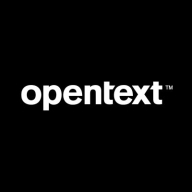

Jira and OpenText Application Quality Management compete in the project management and application lifecycle management sectors. Jira has a slight edge due to its flexibility and integration capabilities, despite complexity in customization, while OpenText is valued for comprehensive insights but criticized for cost and Agile adaptability.
Features: Jira offers a versatile tool for bug tracking, issue management, and project management with a strong API, extensive plugin support, and Agile methodology support. OpenText provides rigorous traceability, detailed reporting, and comprehensive defect management across the application lifecycle.
Room for Improvement: Jira faces complexity in customization, user permissions, and reporting features. It also struggles with performance at scale. OpenText is critiqued for its high cost and complex licensing model, plus challenges with Agile methodologies and modern integrations.
Ease of Deployment and Customer Service: Jira supports deployment across public, hybrid, and private clouds, as well as on-premises, and benefits from robust community support and documentation, though recent human support criticism arises. OpenText, focusing more on on-premises and private deployments, offers structured enterprise-grade guidance and extensive support infrastructure.
Pricing and ROI: Jira's pricing scales with user count, with affordable options for startups, though enterprise-level pricing complaints exist. ROI is seen through efficiency gains. OpenText is perceived as expensive, offering less licensing flexibility, though valuable for complex enterprise applications where comprehensive test management is crucial.
It's always hard to measure ROI precisely, but overall, the development time usually pays off within a year through efficiency gains.
It acts as an enabler for effective test and program management.
Jira's customer support is one of the best I have ever dealt with because they respond quickly.
I did not face any issues with stability or upgrades.
Technical support has been excellent.
Quality is always high yet not perfect.
I am mostly happy with the technical support from OpenText ALM _ Quality Center.
Scalability for Jira is great, and it handles growth easily from 100 to thousands.
OpenText ALM Quality Center is definitely scalable.
From a stability standpoint, OpenText ALM Quality Center has been pretty good.
Focus more on improving API integration and automation tools, not just the design.
To improve Jira, maybe some AI features could be added.
Improvements are needed so that the system can continue running without creating a new run.
As for the scalability of OpenText ALM _ Quality Center, there are limitations, particularly in agile methodologies, which is currently my main concern.
HPLM has one of the best UIs compared to other test management tools, allowing for efficient navigation between test pieces, test folders, test suites, and test execution.
Even if only five people from your team use a financial plugin, you still pay for all 100 seats.
It would be cheaper to use a cloud model with a pay-per-use licensing model.
You can build your own workflows and make it work exactly the way your team needs and integrate it with almost every third-party software.
It creates constant visibility into the test process, showing the status, bugs, and automated test results.
The integration with internal applications and CollabNet is made possible through exposed APIs, allowing necessary integrations.
We can create a requirement for stability metrics with the test cases to ensure all requirements are covered.
| Product | Market Share (%) |
|---|---|
| Jira | 13.3% |
| OpenText Application Quality Management | 4.6% |
| Other | 82.1% |



| Company Size | Count |
|---|---|
| Small Business | 105 |
| Midsize Enterprise | 56 |
| Large Enterprise | 149 |
| Company Size | Count |
|---|---|
| Small Business | 39 |
| Midsize Enterprise | 32 |
| Large Enterprise | 161 |
Jira is a powerful cloud- and subscription-based application lifecycle and issue management solution. It is designed to aid users both in project management and in resolving any issues that arise at any point in the software development process. It is especially concerned with easing the ability of developers to collaborate.
Jira Benefits
Some of the ways that organizations can benefit by choosing to deploy Jira include:
Jira Features
Real-time notification feature. Users can set Jira so that it offers them notifications that contain critical information in real time. It can send users email notifications when pressing issues have been updated. They can also set it to notify them about tasks that may be due, or other similar events.
Reviews from Real Users
Jira is a powerful solution that stands out when compared to many of its competitors. Two major advantages it offers are its workflow engine and its highly customizable dashboard.
Bharath R., the tool implementation and project management lead at a financial services firm, writes, “I feel the strongest feature of Jira is its workflow engine. It empowers us to automate our workflows within our organization. It's the one characteristic of Jira which I think can help any organization, be it in any domain.”
Uday J., a staff engineer at a computer company, says, “Another thing that I like a lot about Jira is that in the dashboard, you can plug the modules that you want. You can enable certain sections. For example, you can show trend history, open Jira tickets, etc. Some of the managers have created a dashboard for each engineer.”
OpenText Application Quality Management offers centralized data management, traceability, and integration capabilities. It aids in handling requirements, test planning, and defect tracking while supporting both manual and automated testing. Challenges exist in deployment and browser compatibility.
Known for its robust reporting and flexibility, OpenText Application Quality Management is tailored for large organizations requiring a comprehensive solution supporting lifecycle coverage and seamless tool integration. Users can consolidate testing processes, manage requirements, and centralize reporting across manual and automated testing. While some face issues with project tracking, outdated interfaces, and limited browser compatibility beyond Internet Explorer, it remains widely used for regression and performance testing. Integration with tools like JIRA and support for tools such as UFT and ALM PC underscore its utility.
What are the key features of OpenText Application Quality Management?In industries such as finance and healthcare, OpenText Application Quality Management is implemented to ensure rigorous testing standards. It supports test case creation and execution, defect tracking, and requirements management. Integration with JIRA and performance testing tools make it suitable for organizations needing synchronized testing environments.
We monitor all Application Lifecycle Management (ALM) Suites reviews to prevent fraudulent reviews and keep review quality high. We do not post reviews by company employees or direct competitors. We validate each review for authenticity via cross-reference with LinkedIn, and personal follow-up with the reviewer when necessary.